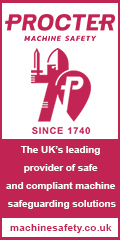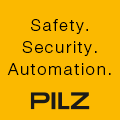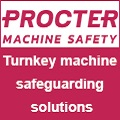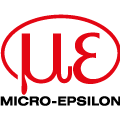
Posted to News on 14th Sep 2008, 12:56
130 Mitsubishi controllers run Hamburg metro system
Hamburg's metro has installed a new operations control and monitoring system based on 130 modular controllers from Mitsubishi Electric.

Hamburg's metro is one of the most efficient local transport systems in Europe, operating three lines with 89 stations, 101km of track and carrying around 180 million passengers every year. Determined to maintain this exceptional performance, the Hamburger Hochbahn AG operating company decided to replace its old control system with a modern operations control and monitoring system that integrates all the dispatching and customer service functions which were previously only available in separate subsystems. The new operations control and monitoring system was developed by Funkwerk Information Technologies.
A gradual transition to the new system began in 2001, with completion in 2008. The new system includes remote control, monitoring and vehicle identification technology. These integrated functions make it possible to manage the metro traffic centrally and oversee satellite control centres at every station.
All key systems are connected to the control centre, including the escalators, lighting systems, ticket vending machines and active passenger information/safety systems - train destination displays, emergency call points and security surveillance cameras. This control capability is based on a distributed computer system installed throughout the entire metro network that employs nearly 250 controllers to process a total of around 100,000 data points.
System Q controllers
Data for the two core tasks, train dispatching and station monitoring, is collected and monitored separately from a dedicated control centre, as is data for the power supplies for the tracks and the stations. The data is collected using the Melsec System Q automation platform with at least two System Q controllers installed at each station, and all configured specially for the individual stations and their power supply control centre functions. If there are points near to the stations, an additional PLC is installed to read the data from the vehicle identification system sensors installed in the tracks.
The strictly segregated controllers then pass the data on to a station computer with a redundant architecture via a Profibus DP network. The computer pre-processes the data and then sends it via an ATM (asynchronous transfer mode) network to the central server, which also has a redundant architecture.
All information can be accessed at any point in the network and can be displayed on the 34 workstation terminals in the main control centre, the local line control centres and the technical service stations. All the information is collected in the main control centre, where there are 12 workstation terminals configured for the train dispatching and station monitoring functions and arranged to match the physical layout of the metro lines. In addition, large-format projection screens provide an overview of the real-time situation in the entire metro network, on which up to 110 trains run simultaneously.
For passengers, the new control system means improved safety and better service. The new technology makes it possible for metro services to be almost entirely automated and achieve higher train frequencies, while the fast communication channels and standardised systems and information improve communication in the event of malfunctions.
It also reduces operating and staff costs.
Because the automation technology has proved so successful, Hochbahn has now decided to also install Melsec System Q controllers at the stations for the new U4 line, which is currently under construction.
Want the latest machine building news straight to your inbox? Become a MachineBuilding member for free today >>


















